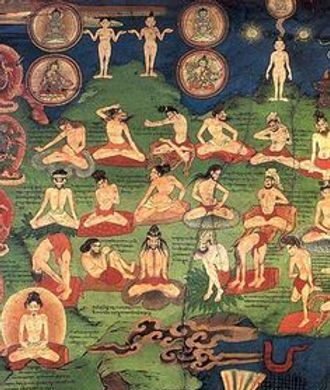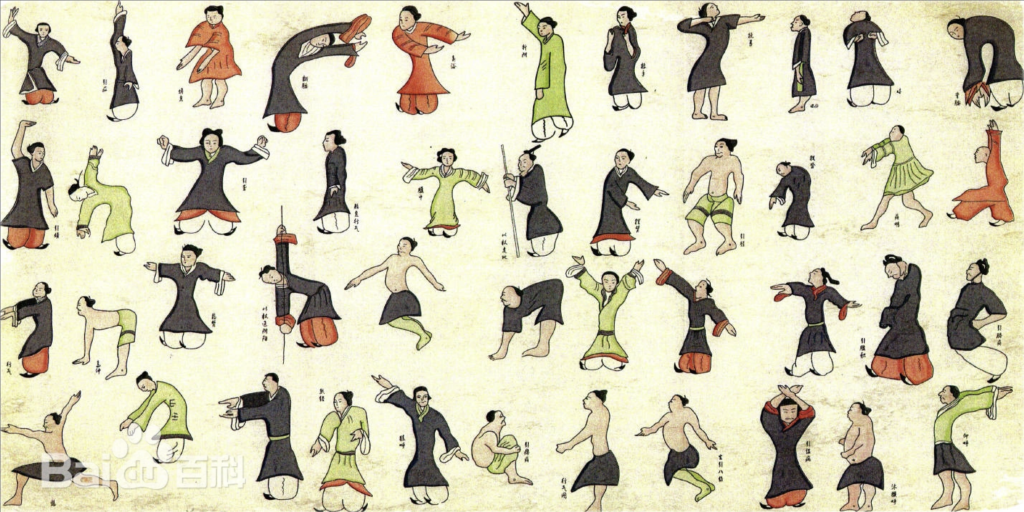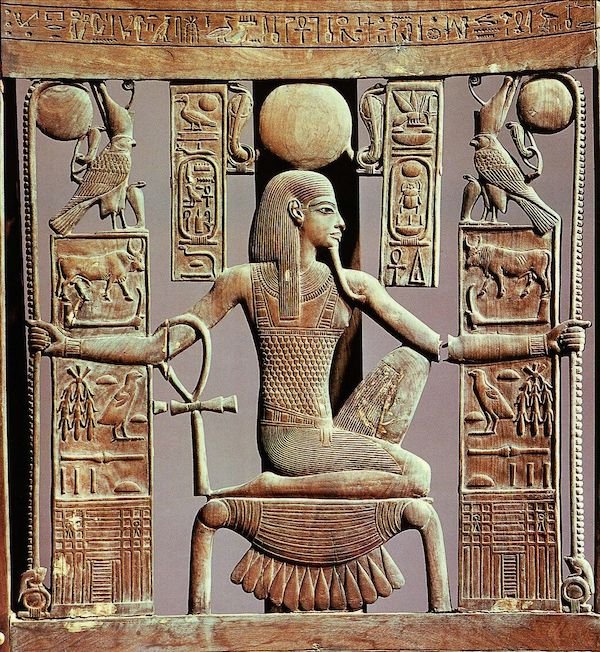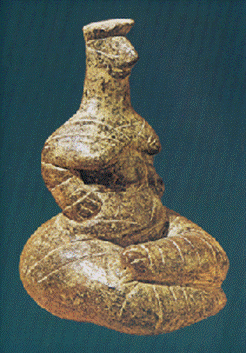After several weeks of dedicated effort, my website is finally coming together! For my first blog post, I wanted to share something that captivated me during my research—the origins of yoga. I hope you find it as intriguing as I did. While my knowledge isn’t exhaustive, I’m excited to share what I’ve learned. Let’s dive in!
The development of yoga can be traced back over 5,000 years, but some researchers think that yoga may be up to 10,000 years old. When ancient people practiced their body and mind in nature, they realized many laws of nature from observing organisms and then applied the laws of survival of organisms to humans, gradually sensing the subtle changes in the body. As a result, humans learned to communicate with their bodies and thus learned to explore their bodies, beginning to maintain and regulate their health, as well as developing an instinct for healing diseases and pain. After thousands of years of research and summarization, a theoretically complete, accurate, and practical health and fitness system gradually evolved, which is yoga.
Let’s start with the Indus Valley Civilization, one of the four ancient civilizations. Yoga is derived from the Sanskrit root word “yog,” which means to join or unite. In Indian yoga, there are many different methods, each with its own school and philosophy on how to best practice yoga. The earliest records of yoga are found in the Vedas, Upanishads, and Bhagavad Gita. Patanjali, a saint of great significance for yoga, wrote the Yoga Sutras around 300-400 BC, which provided all the theories and knowledge of yoga, thus shaping Indian yoga as we know it. In this work, he explained the definition of yoga, the content of yoga, the changes that yoga brings to the body, and more. Modern yoga can be traced back to the 15th century when Rishi Swatmarama wrote the Hatha Yoga Pradipika, one of the most influential texts on Hatha Yoga. The popularity of Hatha yoga in the West can be traced more or less to two key figures: Swami Vivekananda, one of the first to introduce yoga and yoga philosophy to the West, and T. Krishnamacharya, the father of modern yoga, you may be familiar with his four most famous disciples: Pattabhi Jois (Ashtanga Vinyasa Yoga), B.K.S. Iyengar (Iyengar Yoga), Indra Devi (the first lady of yoga), and Krishnamacharya’s son T.K.V. Desikachar (Viniyoga), who played extremely important roles in popularizing yoga in the West.
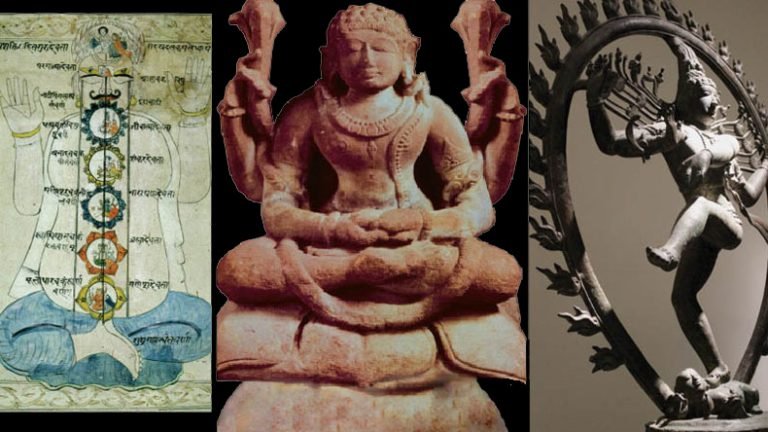
Now we move on to Chinese civilization. There was a practice called “Daoyin.” “Dao 导” refers to “guiding the qi,” making it harmonious, while “yin 引” refers to “stretching the body,” making it flexible. Thus, Daoyin is a traditional Chinese health preservation technique that combines breathing exercises (Dao) and physical exercises (yin), similar to modern health gymnastics. During the Spring and Autumn and Warring States periods (770 BC – 221 BC), a practice called “Xiong Jing” and “Niao Shen,” which combined “blowing, sucking, and breathing,” appeared. The earliest known Daoyin illustrations in the world were discovered in the Mawangdui Han Tombs (early Western Han Dynasty, 202 BC) in Changsha. These silk paintings depict 44 different Daoyin postures, each representing a single figure, including men, women, the elderly, and children, some clothed and some bare-backed, all intricately painted. Most of these exercises were performed without equipment, involving animals such as birds, hawks, cranes, apes, monkeys, dragons, and bears. The Taoists and immortality seekers of the pre-Qin period mutually influenced each other, further advancing the development of Daoyin techniques. It is noteworthy that in the 1970s, martial artist and yogi Paulie Zink developed Yin-Yang Yoga, a combination of Indian Hatha Yoga and Chinese Taoist Daoyin. Paulie Zink’s student, Paul Grilley, used the knowledge he gained from his teacher’s seminars to continue developing Yin Yoga in the 1980s. He brought his version to the West, which is the Yin Yoga style you encounter in any yoga studio today.
In Egyptian civilization, Kemet, or KMT, was an ancient name for Egypt during the era of the pharaohs. Research suggests that the first Egyptians were dark-skinned and came from regions such as Sudan, Ethiopia, southern Arabia, and Babylon. The Kemetic people designed and built pyramids and made significant contributions in many fields, including mathematics, architecture, chemistry, and medicine. There is increasing evidence that ancient Egyptians also had their own form of yoga practice. The first evidence of Kemetic yoga comes from hieroglyphic images found on Egyptian temples, depicting various Egyptian pharaohs and goddesses in yoga postures. In the 1970s, Asar Hapi and Yirser Ra Hotep conducted the first research project to analyze these hieroglyphs and developed the practice now known as Kemetic yoga. The word Kemet or KMT was the ancient name of Egypt during the period when pharaohs ruled, and Egypt was at its peak of civilization and spiritual development.
In Ancient Crete, yoga postures have been recognized on statues excavated in the region of Ierapetra and other places in Crete, dated between 4000 – 3000 B.C. The word “yoga” itself supports the claim of yoga’s connection with the Aegean Sea and Crete. In Sanskrit, “yoga” means union through yoking. The word “yoga” derives from the ancient Sanskrit word “jugam,” which literally means ox yoking. This is conceptually equivalent to the Greek word “zygos.” Yoga is connected with the idea of a yoke to symbolize a complete system of psychosomatic equilibrium. In Crete, the bull is connected with the sky and the sun, while the feminine element, the divine cow, is connected with the moon. Thus, the marriage of the bull and the cow symbolizes the union of the sun and the moon, similar to Hatha yoga, where the sun (Ha) and the moon (Tha) connect together (yoga). Later, the figures of this divine union were King Minos (sun) and the Queen of Knossos Palace, Pasiphae, whose name means “full of light,” highlighting the connection between the queen-goddess and the moon. The sun salutation in yoga played an important role in many civilizations to fulfill this union/yoking.
Yoga is a truly universal tradition, an invaluable key to self-knowledge, and a common thread of inner wisdom shared by all times and cultures. Different geographical locations have created their own traditions of yoga, i.e., mindful movement practices. At the end of the day, it doesn’t matter because, ultimately, yoga is what it was always meant to be. When you sit on your mat and clear your mind of unnecessary thoughts that plague your mind, you are like the sage who sat on a straw mat thousands of years ago. You have the same fundamental essence that connects you to everything around you.


